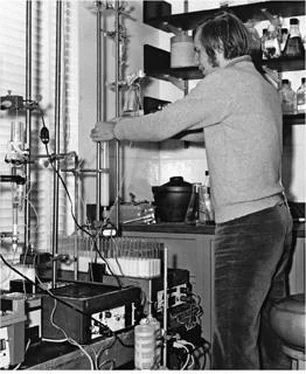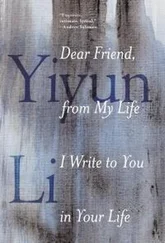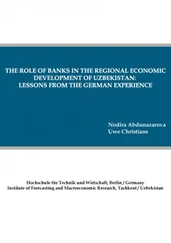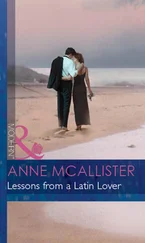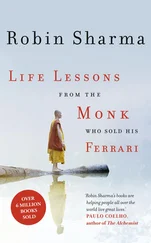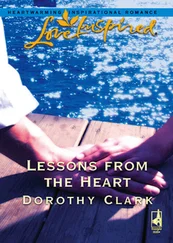James Watson - AVOID BORING PEOPLE - Lessons from a Life in Science
Здесь есть возможность читать онлайн «James Watson - AVOID BORING PEOPLE - Lessons from a Life in Science» весь текст электронной книги совершенно бесплатно (целиком полную версию без сокращений). В некоторых случаях можно слушать аудио, скачать через торрент в формате fb2 и присутствует краткое содержание. Жанр: Биографии и Мемуары. Описание произведения, (предисловие) а так же отзывы посетителей доступны на портале библиотеки ЛибКат.
- Название:AVOID BORING PEOPLE: Lessons from a Life in Science
- Автор:
- Жанр:
- Год:неизвестен
- ISBN:нет данных
- Рейтинг книги:5 / 5. Голосов: 1
-
Избранное:Добавить в избранное
- Отзывы:
-
Ваша оценка:
- 100
- 1
- 2
- 3
- 4
- 5
AVOID BORING PEOPLE: Lessons from a Life in Science: краткое содержание, описание и аннотация
Предлагаем к чтению аннотацию, описание, краткое содержание или предисловие (зависит от того, что написал сам автор книги «AVOID BORING PEOPLE: Lessons from a Life in Science»). Если вы не нашли необходимую информацию о книге — напишите в комментариях, мы постараемся отыскать её.
AVOID BORING PEOPLE: Lessons from a Life in Science — читать онлайн бесплатно полную книгу (весь текст) целиком
Ниже представлен текст книги, разбитый по страницам. Система сохранения места последней прочитанной страницы, позволяет с удобством читать онлайн бесплатно книгу «AVOID BORING PEOPLE: Lessons from a Life in Science», без необходимости каждый раз заново искать на чём Вы остановились. Поставьте закладку, и сможете в любой момент перейти на страницу, на которой закончили чтение.
Интервал:
Закладка:
Of the two, VEE was much further along toward possible tactical use. Though VEE is normally transmitted by mosquitoes, Detrick scientists had shown it also could be transmitted to animal hosts by aerosol mists. Delivered this way, it would likely also infect human beings. Though I was told that adults usually recovered from VEE infection with no long-term brain damage, this high-fever-inducing virus sometimes kills the very young or very old. In my mind employing it in Vietnam, or for that matter anywhere else, should be out of the question. In contrast, I saw much promise in pushing ahead the staph enterotoxin program. While it would make you vomit continually for up to twenty-four hours, ruining church picnics and similar occasions, there were no known fatalities associated with infection. In leaving I told Riley I was surprised that so little was known on our side about the anthrax toxin, despite constant worries about its deadly properties reported in the popular press. Could it easily be weaponized for use against innocent civilian populations without warning?
At that time I was technically on sabbatical leave from Harvard, intending to take up a visiting fellowship at Churchill College in Cambridge. I had not anticipated my PSAC duties when I made plans to see MRC's brand-new Laboratory for Molecular Biology (LMB) in action. I planned to start work there with RNA phages, whose existence had been discovered the year before at Rockefeller University by Norton Zinder and his graduate student Tim Loeb. Until Loeb finished his thesis experiments, Zinder did not want to send out aliquots of his h phage to possible competitors. In the year that followed, several
additional RNA phages were also discovered, one of which, R17, Sydney Brenner had already got possession of. Now in his lab at the LMB, I wanted to purify R17 as a first step toward studying its relatively small, single-stranded RNA molecule of likely fewer than four thousand nucleotides. They might be super messenger RNA templates for use in in vitro (cell-free) protein synthesis studies. Upon arriving in late March, I was joined by Nina Gordon, who the year before had done senior thesis research in my lab. Now she wanted to be in Europe near her Italian-born theoretical physicist boyfriend, Gino Segre, then in Geneva. Over the next two months, Nina and I were distressingly set back by contamination of our host E. coli bacteria by more conventional DNA phages. It was only when I got back to Harvard in early June, where I could enlist the expert hands of my graduate students, that our RNA phage research could effectively start.While still in England I hoped to learn more about anthrax by visiting the UK's top-secret biological weapons lab at Porton Down, near Salisbury. But its anthrax program proved no more advanced than that at Fort Detrick. In 1942 the UK had conducted extensive anthrax testing on a small island off the coast of Scotland, but the program's current leader, David Henderson, was not inclined to spend any more money on a weapon that he believed could destroy the moral authority of the British government. When temporarily back in Detrick, I was briefed in greater detail about a program on rice blast, a fungal pathogen, about which enterprise I had heard when last there. While geneticists elsewhere were working to develop new rice strains resistant to rice blasts, those at Detrick concentrated on developing appropriate blast strains for destroying the rice crops of North Vietnam. Producing rice blasts in large amounts was within Detrick's capabilities, but delivering them was another matter. Helicopter delivery was deemed totally impractical, and no operational American fighter pilot had the radar capabilities necessary for night spraying missions over the Red River delta rice paddies. Later an air force officer was to fill me in on a still-secret radar-guided, terrain-hugging bomber then being evaluated near Dallas.
Likely it was only a bureaucratic snafu that had let me inside Detrick's
Special Project facility, a part of the operation I would never see again. There scientists worked not for the Department of Defense but for the CIA on poisons to be used for assassinations. Among others they were keen to employ was the puffer fish toxin. Synthesizing it, however, was a chemical challenge worthy of the best organic chemists, and they had approached Harvard's Bob Woodward for help. Somewhere within this nondescript, drab building was likely stored the chemical agent that Bobby Kennedy later hoped could be slipped to Fidel Castro.Many faculty members at Harvard who were New Frontier boosters were embarrassed when JFK's thirty-year-old brother Edward Moore (Teddy) Kennedy campaigned against the incumbent George Lodge to become the new junior senator from Massachusetts. His one year of experience as an assistant district attorney was presumptuously paltry. And Teddy's undergraduate years at Harvard were tainted by the scandal of his having sent someone else to take a language exam in his place. Though he later obtained a law degree from the University of Virginia and passed the bar in 1959, Harvard was not proud to count him as one of its alumni. Also running for senator, as an independent, was Harvard history professor Stuart Hughes, whose campaign was based largely on opposition to the nuclear weapons race. Sam Beer, Franny Beer's political scientist father, did not warm to Hughes, believing that he was impractical and unelectable and that as Democrats we should be backing someone who would strengthen JFK's support in the Senate. Soon after I was invited to see Teddy in action at a gathering Sam was holding for important Harvard colleagues at the Hotel Continental in Cambridge. That day Teddy was clearly less impressive than his appealing, fair-haired wife, Joan.
PSAC's oversight of poisons took on more humane considerations after Jerry Wiesner read Rachel Carson's Silent Spring, serialized by the New Yorker in June of 1962. Carson argued that chemical pesticides were fast spreading through the world's food chains, posing an immediate threat to the global environment. Not only were they killing off fish and songbirds, they possibly threatened human existence. With her thesis quickly generating a firestorm of public concern, JFK
himself was drawn into the controversy and stated that Carson's book had led his administration to take the pesticide threat seriously. No federal agency then had a real mandate for an honest investigation of the chemicals’ ecological consequences. The obvious candidate, the U.S. Department of Agriculture (USDA), was too cozy with the agricultural chemical industry. So Jerry assigned his Life Sciences deputy, Colin MacLeod, to head up a special PSAC panel, which Paul Doty and I were asked to serve on. Meeting first on October 1, our deliberations momentarily came to a halt when the Cuban missile crisis drew PSAC's attention elsewhere. Only years later did I learn that one of the nation's contingent responses that scary week was to have jets from Homestead Air Force Base, south of Miami, drop VEE-filled devices on Cuba.Our panel dealt with two major groups of pesticides: the long-lived chlorinated hydrocarbons, of which DDT was the best-known, and the much more toxic, short-lived organic phosphates, such as Sevin. The latter originally were developed as nerve agents for military deployment but later synthesized as less toxic derivatives, such as parathion, to kill insects. The use of both pesticide groups was steadily increasing, with many insects in turn developing genetic resistance, especially to the chlorinated hydrocarbons. Because of their much greater stability, Carson had focused more attention on the chlorine-containing pesticides, pointing out ever-increasing concentrations in the fatty tissues of creatures throughout the food chain. While large amounts of DDT given to human volunteers had no short-term effects, its more toxic derivatives, such as dieldrin, might well pose public health threats. An already widely used pesticide, dieldrin was a nasty liver toxin at high doses. More worrisome, mice exposed to it at much lower levels were developing liver adenomas that conceivably might develop into malignant carcinomas. But with the Federal Drug Administration (FDA) calling these adenomas benign, the USDA blocked the invocation of the so-called Delaney amendment, which prohibited cancer-causing agents in the nation's food. If the FDA were to ban outright all chlorinated hydrocarbon pesticides, however, American agriculture would have been deprived of a chemical that
Читать дальшеИнтервал:
Закладка:
Похожие книги на «AVOID BORING PEOPLE: Lessons from a Life in Science»
Представляем Вашему вниманию похожие книги на «AVOID BORING PEOPLE: Lessons from a Life in Science» списком для выбора. Мы отобрали схожую по названию и смыслу литературу в надежде предоставить читателям больше вариантов отыскать новые, интересные, ещё непрочитанные произведения.
Обсуждение, отзывы о книге «AVOID BORING PEOPLE: Lessons from a Life in Science» и просто собственные мнения читателей. Оставьте ваши комментарии, напишите, что Вы думаете о произведении, его смысле или главных героях. Укажите что конкретно понравилось, а что нет, и почему Вы так считаете.
